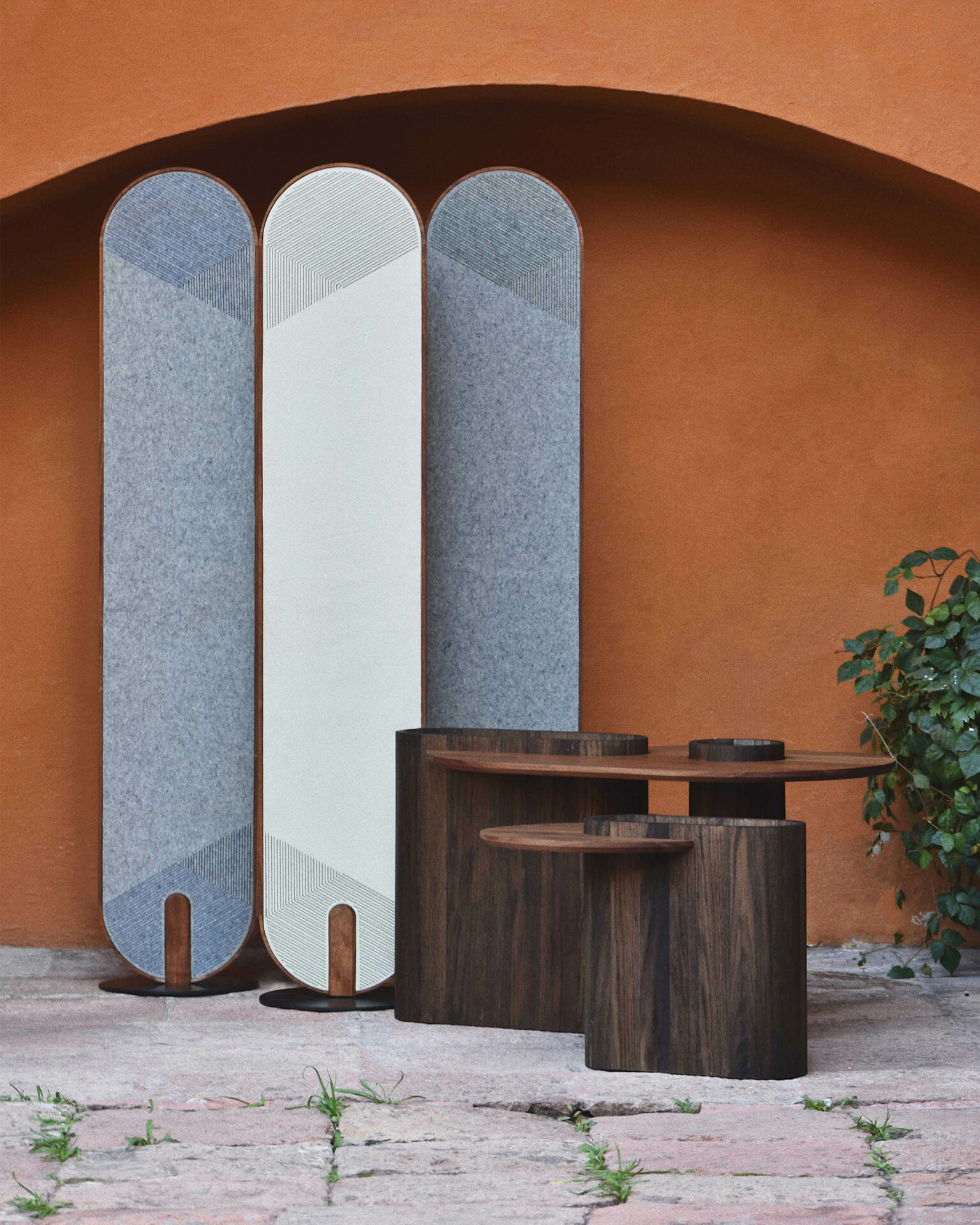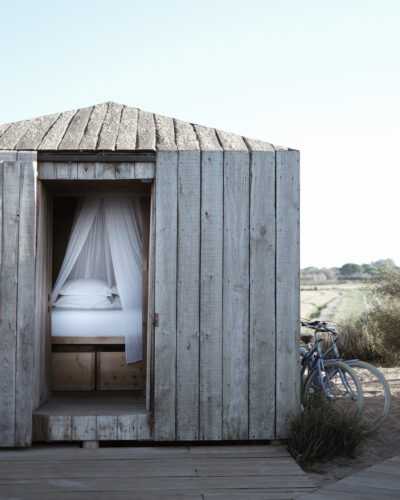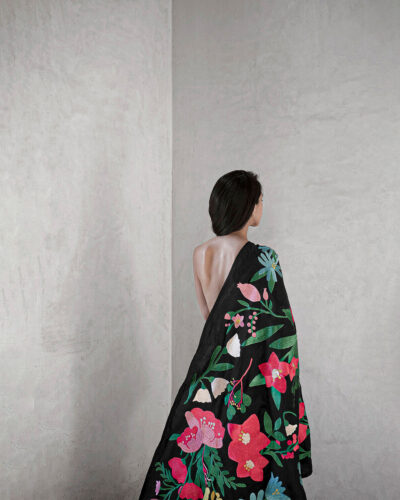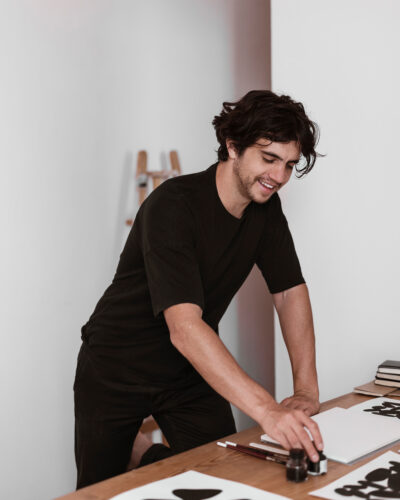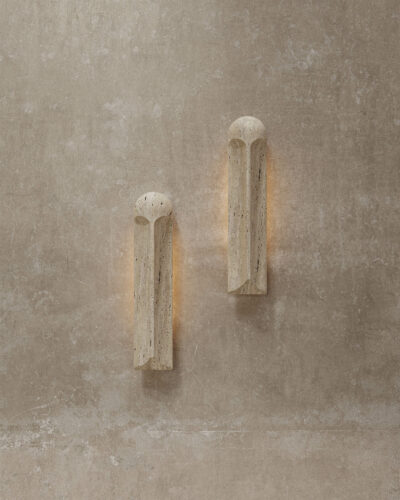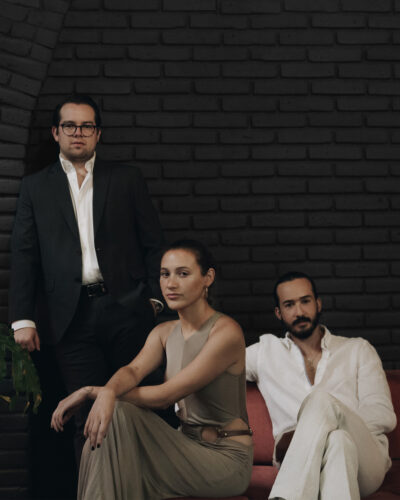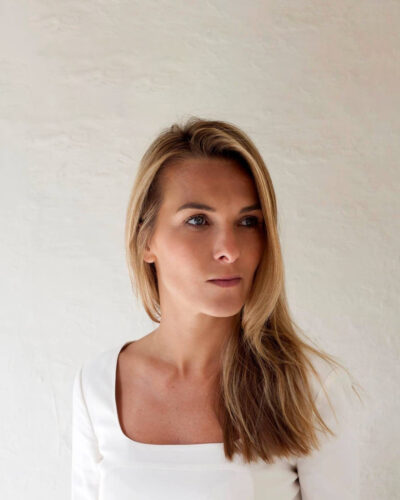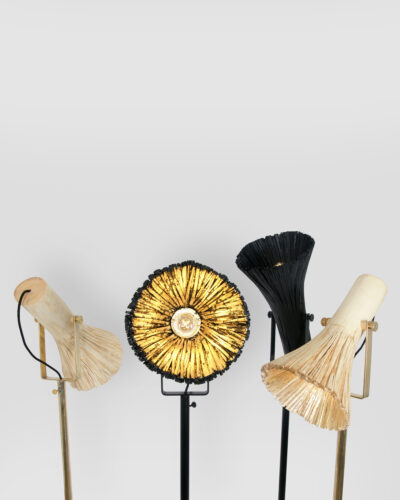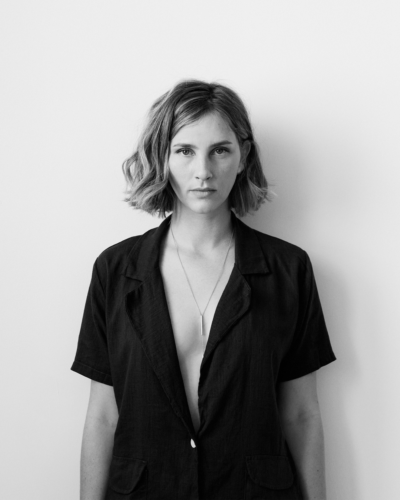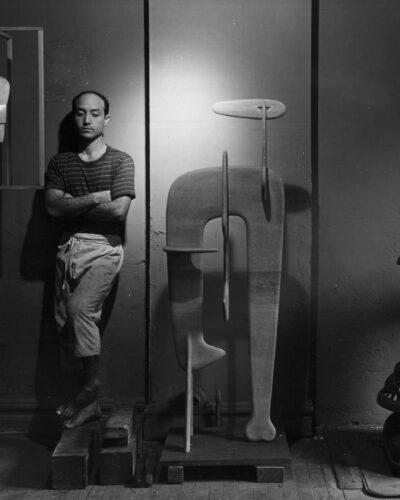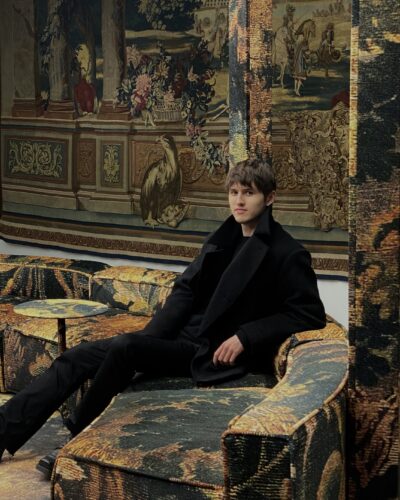This website uses cookies so that we can provide you with the best user experience possible. Cookie information is stored in your browser and performs functions such as recognising you when you return to our website and helping our team to understand which sections of the website you find most interesting and useful.
Listen to the conversation between Rosanna and Colección Studio.
The coming together of three industrial designers, Colección Estudio is a collaboration between Daniel Martinez, Manuel López and Andrés Cacho. Through individual thought and collective analysis, Coleccion Estudio produces clean and concise designs that are both highly conceptual and hand-crafted. Based in Mexico, the studio does not inhabit a physical space, but instead exists as a shared language between the three designers, whose pieces evolve through many stages and multiple conversations, growing layer by layer over time…“We all have experience in different fields – me [Manuel] in textiles, Andrès in art and Daniel in marketing – but we always come back to our [shared] knowledge as industrial designers…”
“It is very important that we see different things, individually – it definitely enriches our process”
Whilst the designers each bring something unique to the table, the three share a great interest in Mexican culture, which provides a dynamic reference point for their work together. Rooted in the rich history of art, design and craft in their country of origin, Colección Estudio hopes to promote and preserve its craftsmanship. Andres Cacho notes that, “Mexico is a very artisanal country, our craft is very iconic, but when we would go abroad we noticed that in other countries the craft seemed different than in Mexico – its value was different, so I did a lot of research about this, asking what is art, what is craft, what is design? …. When I lived in Japan [I was struck by] the quality of the craft there, which is amazing. Over there you can study a master’s degree in craft, you can do a PhD in craft – whereas in Mexico we don’t have that – yet. ”
The first collection is the direct result of the studio’s research into the cultural value of craft in Mexico; Cacho explains that, “Craft here [in Mexico] is something that is thought to be very repetitive, almost like you don’t think about making it, you just do it. We wanted to challenge that idea – this conception of craft in our country [as being mindlessly repetitive] – and so the repetition in our design is an aesthetic choice, it is an important part of the composition.”
The debut collection was a series of many-legged tables, which explore ideas of craft, repetition and the craftsman’s search for perfection. Carved by hand using a woodturning technique, the shape of each leg is defined by using a blade to shave away at the wood as it spins in a lathe. “Through repetition you can achieve a lot of control – in the end, it all comes down to practice, though every leg is slightly different because I’m not a robot – but we do try to achieve the same proportions in all of the pieces.”
“The search of perfection through repetition”
The shape of the leg is inspired by a mainstay of Mexican homes and handicrafts – the Molinillo, which Daniel explains as, “The tool that we use to blend chocolate into milk. It’s a simple wooden tool that is made using the same wood-turning technique [that we specialise in] and it is very common in Mexico.” To reinterpret such a ubiquitous Mexican form, the studio has simplified its silhouette, paring it back to its most basic characteristics – a length of wood with a broad, flat base. “We wanted to do something more conceptual, not so straight-forward – a little more abstract.”
The long and elegant legs gather beneath the table top, huddled together in close proximity. When seen en-masse, they take on an animalic quality, conjuring thoughts of the centipede or another as-yet-undiscovered insect, and the tangle of legs implies a sense of movement – as if the table might scuttle off, playfully repositioning itself when no one is looking….
A rich and intense black, the legs are charred before being topped with a wooden tabletop that has been ebonized with iron acetate – offering a different textural note to the legs below. Also available in natural oak, the design takes on a mid-century Scandinavian feel, which is in contrast to the more sculptural qualities of the charred black pieces. “We love the expressivity of each wood. We mostly work with wood and we love that each one has a different expression – in the wood itself, and also as the finished product.”



Since its introduction, the Molinillos has been reimagined using the same basic elements – finding new compositions and creating different associations. The turned wooden legs, still excessive in number, form a neat circle that can be admired from any angle through the transparent glass tabletop: “It was important to see through the glass because we wanted something to show the legs, the main feature of the piece.” Extending beyond the underside of the table, the legs seem to emerge through the glass, like rocks breaking the surface of the water. “We made these caps that go over the top of the legs with brass screws that make a sandwich with the glass. It’s the same design – but it’s a very different piece.”
“We like to explore the endless possibilities that different materials and techniques can bring to our ideas.”
Developed in 2020, in the midst of the pandemic, Colección Estudio’s second collection was inspired by, “the new relationship we had with the spaces that we inhabit – and so we decided to call it Perspective.” A sculptural assemblage, each piece in the collection brings together a range of different shapes and materials – pleasing combinations of shape and form, tone and texture. Table tops are punctuated with mirror and embroidered felt, which are nestled in protective wooden frames that extend towards the ground – both a functional base and a decorative element. “This particular collection has a very different way of working the wood; we were inspired by Japanese bathtubs, which are made of lots of small pieces of wood that are joined by a metal ring. We sand the outside of the panels by hand [with a Japanese wood plane] to soften the shape, so it looks perfectly round from the outside, but you can still see the flat faces of the wood on the inside.”
Like water in a bathtub, the mirrored inserts create a sense of depth, accentuating the volume and mass of the wooden form. By contrast, the wool felt adds warmth and a sense of comfort to the piece, acting as a counterpoint to the mirror’s cool and reflective qualities. “Wool felt is a material that has a strong tactile value – even if you don’t touch it you can guess how it feels, and that’s something we wanted to provide, so that you can just look at it and feel good from that interaction,” notes Manuel. “I really admire Ilse Crawford, whose work is a lot about the emotional relationship that you develop with a space – not only stimulating our sense of sight but trying to experience a space with all of your senses, andso we have been trying to create those kind of transitions and transactions [in our own work]…”
Ribbed and lined, the wool has been embroidered with abstract geometric patterns, neat rows of stitching that describe three-dimensional space: “[With this collection] we were exploring volumes and intersections. We are very interested in volumes and geometry and so [our second collection] was an exploration of those themes.” Alongside the tables, the collection also includes a standing mirror and room divider – elegant, elongated wooden oblongs that frames either stitched felt or silvery mirror.
Daniel describes the influence that Charles and Ray Eames have had on his own work – his conception of design and style. “I like the balance between making something very conceptual, very artistic and making something for the masses. I would like to make something in that way – something that is beautiful and well-designed but that everyone can buy…” The latest design from Colección Estudio directly addresses this concern, successfully achieving high design and low cost.
Combining the intricate textural qualities of wood with the clinical uniformity of the chemist’s test tube, the protective wooden outer layer is cut away at various points to reveal the glass inner tube – and, of course, a section of vivid green stem belonging to the flower that is on display. Intended for delicate and thoughtfully-curated floral arrangements, the design was informed by the ancient Japanese practice of Ikebana, which elevates flower arranging to the level of pure poetry.
Another inspiration for the vase’s design was ‘Heaven’ – a plaza in Japan that was designed by Isamu Noguchi for the Sogetsu School of Ikebana. “We used the plaza as inspiration – it seems fitting that Noguchi’s design is part of a building for Ikebana, it’s very appropriate.”Noguchi’s presence can be felt in the vase’s geometric cut-outs; its combination of the circular and angular; and its minimal approach and refined detailing. Intentionally restrictive, the vase can accommodate only one or two stems: it is a design that quietly accentuates the beauty and individuality of the sprig, stem or flower within.
Craft – like art, or design – can be difficult to define; in the most basic terms it can be described as ‘a form of making that results in a functional object.’ Colección Estudio has adopted and evolved Mexican craft – translating and adapting it through the principles of industrial design and Japanese production, of textile design and Fine Art. Rooted in tradition, Colección Estudio elevates Mexican craft through a sophisticated blend of new and old, remaining true to the things that are beautiful, vital and honest about the crafts of their home country, whilst adding a layer of refinement.
“We like to design and produce slowly, which is reflected in our collections.”
Crafts develop slowly over years, decades and centuries – evolving in parallel with skill of the maker and the passing of time. Adopting the pace of traditional crafts, Colección Estudio produces each piece by hand, using methods and techniques that would be recognisable to the generations of craftsmen who came before them. Imbued with character and charm, each piece is a reflection of its makers -benefitting from the individual creativity and collective cohesion between Colección Estudio’s three Directors.



